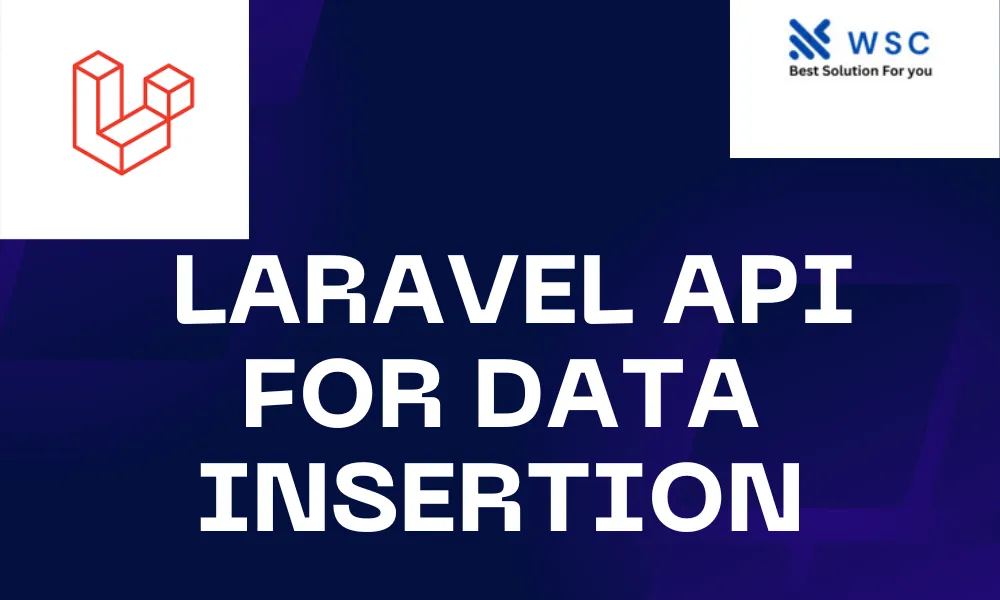Introduction:
Laravel is a powerful PHP framework that simplifies the development of web applications, including the creation of robust APIs. In this tutorial, we’ll focus on building a Laravel API for data insertion. We’ll cover the essential steps and provide practical code examples to help you understand the process easily.
Prerequisites: Before we begin, make sure you have the following prerequisites installed on your system:
- PHP
- Composer
- Laravel (installed via Composer)
- Database (MySQL, PostgreSQL, etc.)
Step 1:
Create a New Laravel Project Start by creating a new Laravel project using the following command:
composer create-project --prefer-dist laravel/laravel data-insert-api
Navigate to the newly created project directory:
cd data-insert-api
Step 2:
Set Up Database Configuration Edit the .env file in your project directory and configure your database connection settings, including the database name, username, and password.
DB_CONNECTION=mysql
DB_HOST=127.0.0.1
DB_PORT=3306
DB_DATABASE=your_database_name
DB_USERNAME=your_database_username
DB_PASSWORD=your_database_password
Save the changes and run the following command to migrate the database tables:
php artisan migrate
Step 3:
Create a Model and Migration Next, let’s create a model and migration for the data you want to insert. For this example, let’s assume we’re dealing with a “products” table. Run the following commands:
php artisan make:model Product -m
This will generate a Product model and a corresponding migration file.
Open the generated migration file in the database/migrations directory and define the columns you need for your “products” table. For instance:
public function up()
{
Schema::create('products', function (Blueprint $table) {
$table->id();
$table->string('name');
$table->text('description');
$table->decimal('price', 8, 2);
$table->timestamps();
});
}
Run the migration to create the table:
php artisan migrate
Step 4:
Create a Controller Now, let’s create a controller to handle the API requests related to data insertion. Run the following command:
php artisan make:controller ProductController
Open the generated controller file in the app/Http/Controllers directory and define the necessary methods for data insertion:
use App\Models\Product;
use Illuminate\Http\Request;
class ProductController extends Controller
{
public function store(Request $request)
{
$validatedData = $request->validate([
'name' => 'required|string',
'description' => 'required|string',
'price' => 'required|numeric',
]);
$product = Product::create($validatedData);
return response()->json(['message' => 'Product created successfully', 'data' => $product], 201);
}
}
Step 6:
Test the API Now that everything is set up, it’s time to test our API. Start the Laravel development server:
php artisan serve
Using a tool like Postman or cURL, send a POST request to http://localhost:8000/api/products with the required data (name, description, and price) in the request body. You should receive a JSON response indicating the success of the operation.
Conclusion: In this tutorial, we’ve walked through the process of creating a Laravel API for data insertion. We covered setting up the project, configuring the database, creating a model and migration, defining a controller, and setting up routes. By following these steps and understanding the provided code examples, you should be well-equipped to build your own Laravel APIs for data insertion. Happy coding!
Check our tools website Word count
Check our tools website check More tutorial




